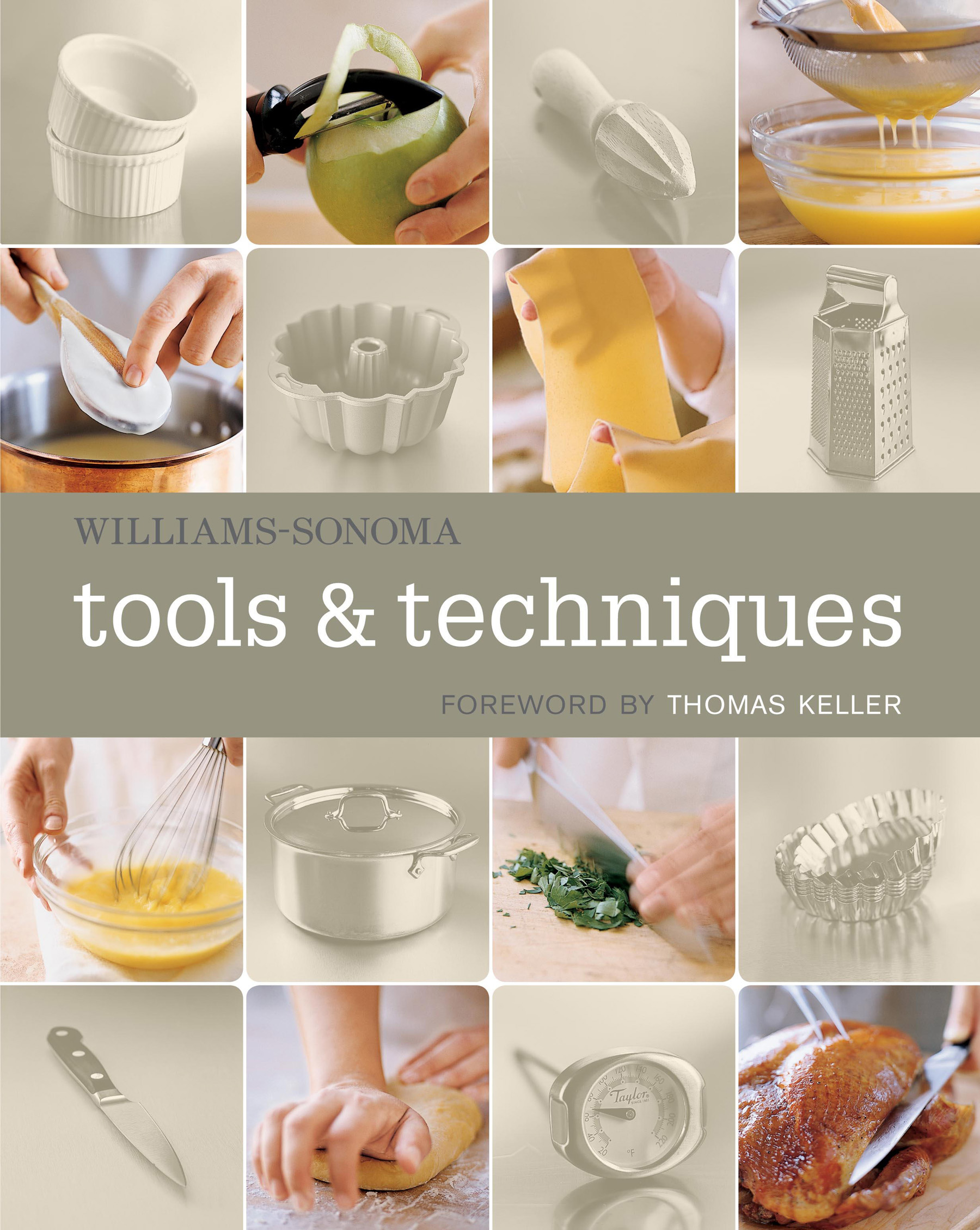New “Tools & Techniques” Book For Budding Cooks
The new “Williams-Sonoma Tools & Techniques” (Gold Street Press, $34.95) book is a gold mine for gadget lovers.
This handy reference book starts out with a primer on every pan, tool, knife, and small appliance imaginable. Yes, with its lovely pictures of each item it almost resembles a Williams-Sonoma catalogue on steroids. Almost all the implements probably can be purchased at Williams-Sonoma stores. But along with the gadget pics comes lots of useful information for picking and choosing what you need in your kitchen.
Pyrex glass pie dishes? Yes, they’re great for seeing how a crust is browning. But because tempered glass doesn’t conduct heat as well as metal, bottom crusts may take as much as 15 minutes longer to bake, according to the book. Buying a cleaver? Choose one that feels heavier than you first think is comfortable, the book advises, because the weight of the blade actually helps you cut through things more easily.
The book also outlines basic techniques every cook should know — from skinning a fish fillet to trussing poultry. In addition, 50 basic recipes are included for everything from buttercream to chicken stock.
May 3, from 11 a.m. to 1 p.m., get a chance to see some of these techniques in action when the Purcell Murray Culinary Lifestyle Center in Brisbane hosts, “Tools & Techniques: Vegetables 5 Ways.” The class will concentrate on five different ways to prepare vegetables, including braised fennel with tomato, and grilled ratatouille.
The class includes lunch, and a book-signing by Jennifer Newens, executive editor of “Williams-Sonoma Tools & Techniques”. Price of the class is $45. To reserve a spot, call (415) 330-5557.
Meantime, enjoy this recipe from the book:
Citrus curd
(makes about 1 1/2 cups)
3 or 4 lemons, 4 or 5 limes, or 2 or 3 oranges, preferably organic
2 large eggs, plus 2 large egg yolks
1 cup granulated sugar
6 tablespoons unsalted butter, at room temperature
Wash fruit. With a rasp grater positioned over a bowl, carefully draw the fruit across the grater, removing just the colored portion of the peel, called the zest. Take care not to remove white pith below, as it is bitter. Measure out 2 teaspoons and set aside.
Cut fruit in half crosswise. Using a citrus reamer or a citrus press held over a bowl, juice each half. Pour juice through a fine-mesh sieve held over a measuring cup or bowl to remove pulp and seeds. Measure out 1/2 cup juice and set aside.
Pour water to a depth of 1 inch into a saucepan. In a metal bowl large enough to fit on top of a saucepan to create a double boiler, combine all ingredients except butter and zest. Whisk ingredients until well blended.
Cut butter into 12 equal pieces and add them to mixture without stirring. Place saucepan over medium-low heat until water is barely simmering. Place bowl with egg mixture on top of saucepan and cook, stirring constantly with a wooden spoon or silicone spatula, until curd is thick, about 8 minutes. To ensure a smooth curd, make sure you reach bottom and sides of bowl when stirring.
To test consistency of citrus curd, pull spoon or spatula out of mixture and draw your finger across the back; a trail should remain that does not fill in immediately. (You also can test the curd with an instant-read thermometer; it should register 165 degrees when it’s inserted into the mixture.)
Hold a fine-mesh sieve over a bowl and pour curd through sieve. You can use the wooden spoon or silicone spatula to help the mixture through. Any stray lumps will be trapped in the sieve. Stir citrus zest into curd. Press a piece of plastic wrap directly onto the surface of the curd (this helps prevent a skin from forming) and poke a few holes in the plastic with a thin skewer or toothpick to allow heat to escape. Refrigerate until curd is well chilled and set, about 3 hours.
To freeze citrus curd: Put chilled curd into an airtight container. Press plastic wrap directly onto surface of curd and cover tightly. Freeze for up to 1 month. Because the curd has a dense texture and low moisture, there is no need to thaw it before using.
Uses: Curd can be used as a filling for layer cakes or cake rolls, or combined with whipped cream for fluffy frostings.

